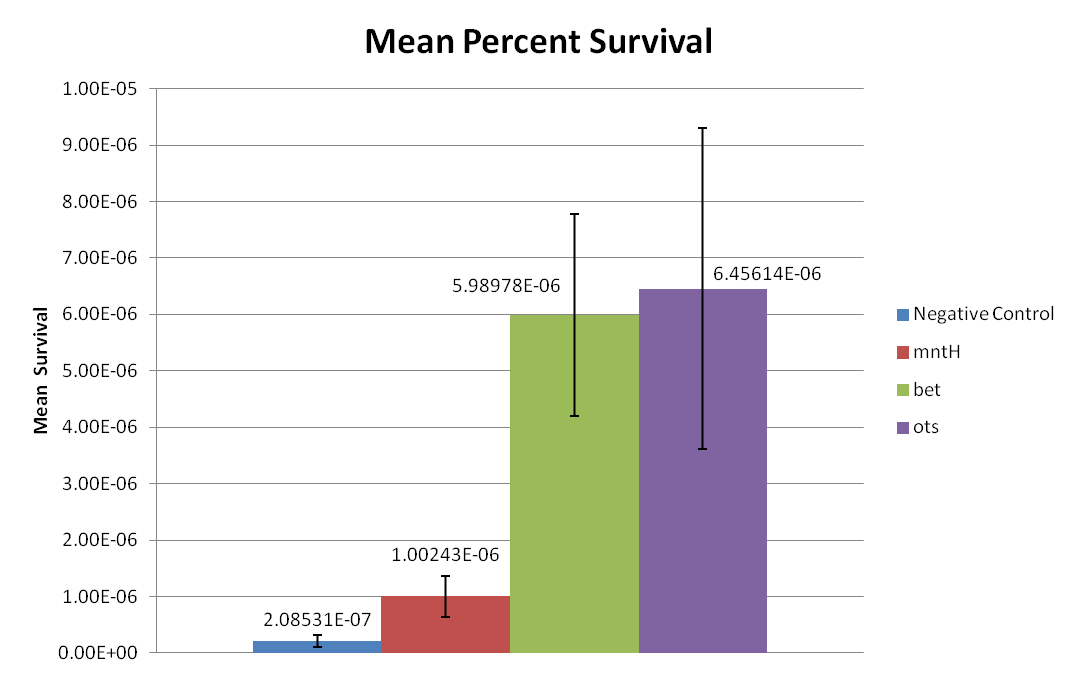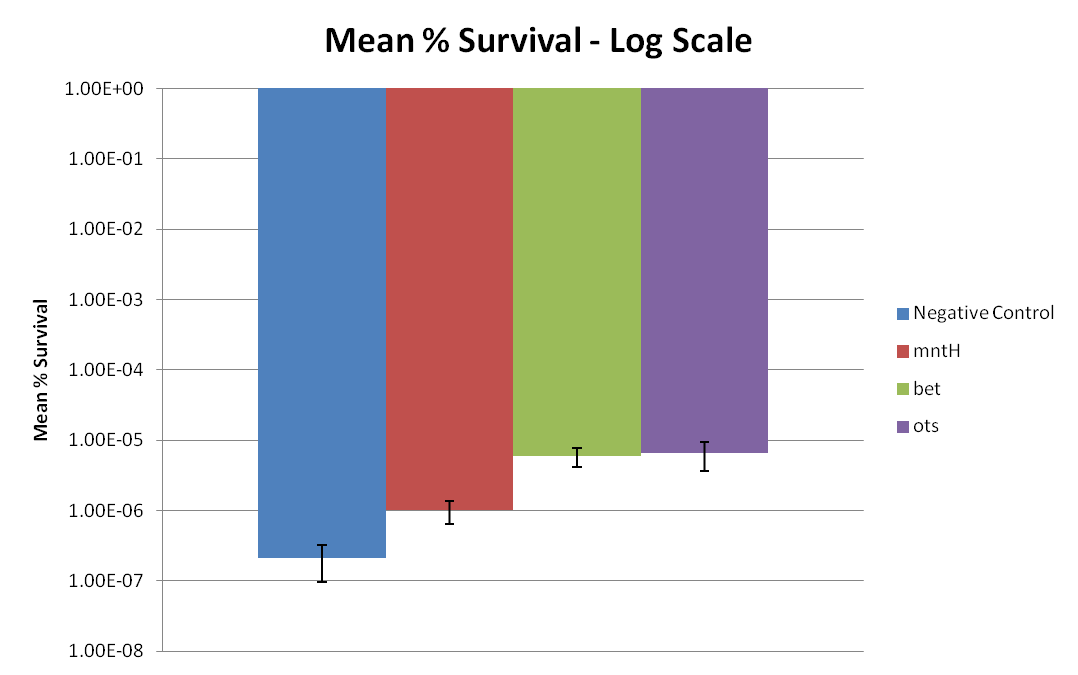Team:Stanford-Brown/HellCell/Desiccation
Desiccation
At a glance
Extremophiles: Pantoea agglomerans and Saccharomyces cerevisiae
Proteins of interest: choline dehydrogenase and betaine aldehyde dehydrogenase (glycine betaine biosynthesis pathway) and Osmoregulatory trehalose synthesis A and B (trehalose synthesis pathway)
Consensus: Effective
Saccharomyces cerevisiae, baker’s yeast, is remarkably resistant to desiccation, and it has been shown that certain osmoprotectant chemicals accumulate in these cells when desiccated. One of these chemicals is trehalose, a disaccharide that was initially implicated in desiccation resistance because of its accumulation (Calahan, Dunham, DeSevo, and Koshland 2011). Surprisingly, assays of trehalose’s effectiveness in the resistance of yeast have produced conflicting and inconsistent results (Calahan et al. 2011).
The gram-negative biocontrol agent Pantoea agglomerans was ineffective at controlling blue mold on fruits because of the long periods of dehydration that it experienced during the processing of the fruit (Bonaterra, Camps, and Montesinos 2005). Its effectiveness was significantly increased when it accumulated trehalose and glycine betaine during desiccation, and it was hypothesized that these osmoprotectants “operate through protection of membrane phospholipids by direct hydrogen bounding with phospolipid head groups maintaining the liquid crystal state and stabilising proteins by water replacement via hydrogen bounding” (Bonaterra, Camps, and Montesinos 2005). Glycine betaine was also found to have an osmoprotectant role in E. coli itself (Cayley, Lewis, and Record 1992).
To learn more about the ability of trehalose and glycine betaine and potentially apply them towards desiccation resistance, the Hell Cell Squad isolated the genes necessary for biosynthesis of trehalose and glycine betaine in E. coli and put them into the Test Plasmid. We also tested MntH mutants for desiccation resistance-conferring properties (see Radiation).
~stuff about protocols~
Figure 1: This graph displays the percent of surviving cells after 24 hours of desiccation. The exact survival percentages and standard errors of the mean are displayed above each sample in decimal form.
Figure 2: Displays Figure 1 in a log scale.
Based on cell survival after 24 hours of desiccation, it is observed that the bet construct and ots construct provides desiccation resistance. Additionally, the mntH construct may also provide slightly increased desiccation resistance. Figure 1 displays that mntH only slightly provides desiccation resistance, while bet and ots provides significantly more desiccation resistance. This trend can be more clearly observed in Figure 2. Figure 2 clearly displays that the E. coli mntH construct increases survivability by almost one order of magnitude. Additionally, Figure 2 also displays that the bet and ots constructs provide almost two orders of magnitude increase in survivability. Based on these results, it is reasonable to conclude that the bet and ots constructs provide significant desiccation resistance and that mntH provides slight desiccation resistance.
Sources:
Calahan, D., Dunham, M., DeSevo, C., Koshland, D.E. (2011). Genetic analysis of desiccation tolerance in Saccharomyces cerevisiae. Genetics, 189: 507-519.
Bonaterra, A., Camps, J., Montesinos, E. (2005). Osmotically induced trehalose and glycine betaine accumulation improves tolerance to desiccation, survival and efficacy of the postharvest biocontrol agent Pantoea agglomerans EPS125. FEMS Microbiol. Lett., 250: 1-8.
Cayley, S., Lewis, B. A., Record Jr., T. (1992). Origins of the osmoprotective properties of betaine and proline in Escherichia coli K-12. J. Bacteriol. 174(5): 1586-1595.
 "
"

